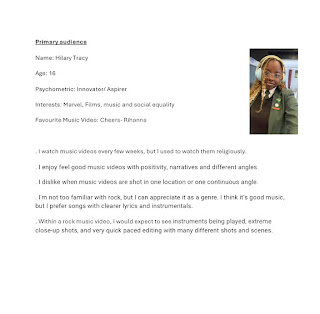Website- Olivia Rodrigo
Olivia Rodrigo is an American singer-songwriter, her website '
GUTS world tour – Olivia Rodrigo | Official Store' being centred around her pop-rock album 'GUTS'. The website is interactive, a reoccurring theme being the stars seen floating within her merch, competitions, and webpage banner.
Banner
Rodrigo's website includes a cyclically changing banner, featuring images of her advertising her merchandise, and using puns such as 'spilling her guts' to promote her current tour.
Merchandise
Within her merchandise promotion, Olivia Rodrigo is the only model used within advertisement. This acts as a form of value transference from her to the product, as fans know that the merchandise they are receiving will be authentic, as it has been worn, and advertised by the artist herself. Additionally, the use of elite persons within this advertising draws more attention to the products, increasing the likelihood of being purchased.
Digital Convergence
Within her merchandise store, Olivia Rodrigo has 'collections', consisting of merchandise relating to the music videos of her songs. This directly links her music videos to her website, as fans can interact with and purchase items they have previously seen.
Olivia Rodrigo's website contains a 'guts game' tab, where an audience can complete a quiz and receive a song that matches their personality. With this information, fans are then redirected back to the merch store, and suggested products that fit them the best. This is an intelligent form of advertising her merchandise store and her GUTS tour simultaneously, as not only is Rodrigo amplifying fans excitement to attend the concert, but she is also alleviating any potential distress caused by not knowing what to wear, capitalising off their concerns by providing a solution within her personal store.
Additionally, fans have the opportunity to win a purple acoustic guitar, signed by the artist herself, if they sign up to this competition. However, fans need to attend one of her shows in order to meet the entry requirements. This is a good way of once again amplifying excitement for the tour, whilst making sure fans actually purchase a ticket and attend.
Tour attendees are also invited to share their images taking from their show online via '#GUTSworldtour' for the chance to be features on the website. This not only advertises the tour at a cheap cost for Rodrigo, but also creates a space online for fans to talk about their positive experiences, instilling a sense of missing out in those who haven't attended. This inevitably encourages fans to purchase a ticket and attend, so they can be seen by both other fans, by relating to them, and potentially seen by the artist herself by being recognised on her website.













.png)
.png)
.png)
.png)
.png)
.png)
.png)
.png)






















.png)
.png)
